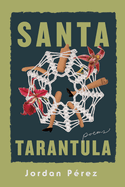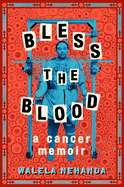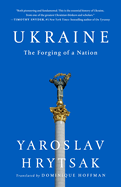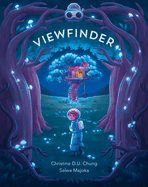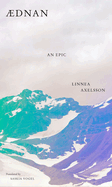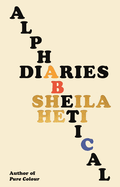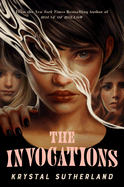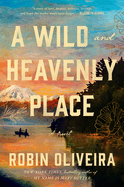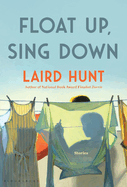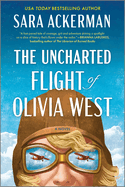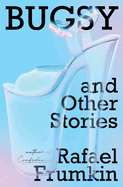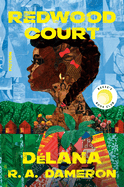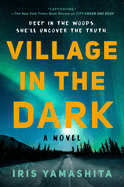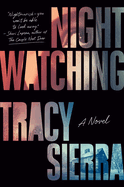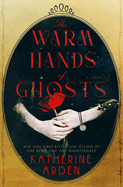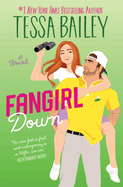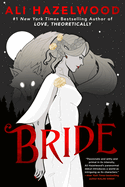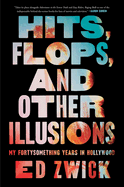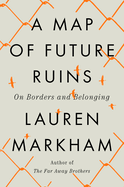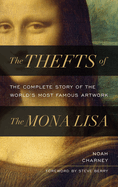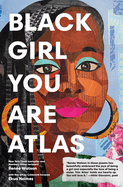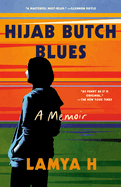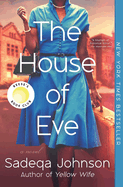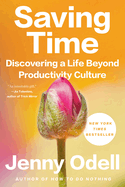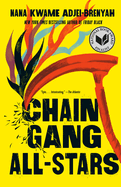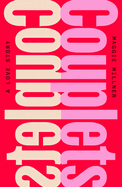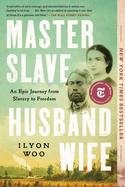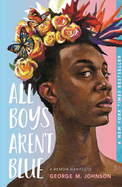Friday, February 16, 2024
Among the many outstanding books reviewed in this week's issue, we showcase memoirs galore! In What Have We Here?, actor Billy Dee Williams delivers "a priceless showbiz record" of his trailblazing years in Hollywood; and Elizabeth Camarillo Gutierrez "cracks open the 'bootstrap' narrative" of the U.S. in My Side of the River. Although YA author Walela Nehanda's cancer memoir, Bless the Blood, "ain't a john green novel," it is instead a "lucid" consideration of "self-realization and determination to survive."
In The Writer's Life, Sheila Heti explains how she wrestled her meticulous and experimental new memoir, Alphabetical Diaries, into submission through an editing process that took nearly a decade and a half!
Aednan: An Epic
by Linnea Axelsson, transl. by Saskia Vogel
Swedish author Linnea Axelsson and translator Saskia Vogel present an exquisite prose poem or work of poetic fiction in Aednan, the title a Northern Sámi word meaning an amalgam of earth, mother, and land. It's the tale of Ristin and her husband, who experience the tragic loss of their son while migrating with their reindeer across the boundaries created between Norway, Sweden, and Finland. The boy's voice and memory linger throughout the coming generations: "You left me/ on the Swede's farm/ alone and wrapped/ in my large kolt/ I did not stay there."
The book traces all that the Sámi endure: the medical examinations by government practitioners, eager to mark them as other; the forced removal of children from their families to attend sanctioned schools meant to steep them in the culture of the dominant societies ("The Swedish/ language grew/ along my thoughts/ The Sámi since long/ asleep in the body/ of shame/ obedience overlaid"); and the inevitable pushback of the authorities when the Sámi finally begin to resist and make their voices heard. Spanning a century of oppression, Aednan--awarded Sweden's most prestigious literary prize, the August Prize, in 2018--is a formal and narrative marvel.
The narrative employs a style that is both novel and as old as ancient verse, utterly captivating and singular. Readers of literary fiction and poetry who've enjoyed works like Tommy Orange's There There, Joy Harjo's Catching the Light, or Ann-Helén Laestadius's Stolen (translated by Rachel Willson-Broyles) will find a new favorite here. --Elizabeth DeNoma, executive editor, DeNoma Literary Services, Seattle, Wash.
Discover: This mythical, epic telling of a family and a people is an exquisite prose poem about the Sámi experience.
A Wild and Heavenly Place
by Robin Oliveira
In A Wild and Heavenly Place by Robin Oliveira (I Always Loved You), one family's abrupt departure from Scotland sets a pair of star-crossed lovers on a breathtaking adventure to Washington Territory. Along the way, Oliveira successfully develops the Pacific Northwest as a vivid character, encompassing both the "unsurpassed beauty" of the region and a nascent 1879 Seattle, "a town so ugly that it defied belief."
Hailey, a privileged member of Glasgow society, meets impoverished Samuel when he gallantly snatches her toddler brother from beneath a runaway carriage. Their attraction is immediate, but the romance is thwarted when a bank failure forces the MacIntyre family's immigration to America. Hailey's gentle strength and Samuel's determination infuse their story with hope, in spite of their separation. Alternating chapters record their silent mutual longing, and the loyalty they each have to their young siblings. Hailey, destitute when a coal mine disaster crushes the hopes her father had for their fresh start, is unaware that Samuel has arrived in the Washington Territory, earning financial stability with his boat-building skills. Reuniting in Seattle, their passion is again forbidden, even as the city rises from "ramshackle wooden buildings" to "the illusion of a burgeoning cosmopolitan metropolis."
Oliveira's details of the Puget Sound's natural beauty and the rapidly growing city of Seattle, infused with the optimism of immigrants from around the globe, tempers the suspense rising from the young couple's frustrations. A gripping, climactic event, pitting Hailey and Samuel against the forces that separate them, determines if the "wild and heavenly place" will indeed be theirs, in this novel of love and resilience. --Cheryl McKeon, Book House of Stuyvesant Plaza, Albany, N.Y.
Discover: A star-crossed romance seems doomed as young immigrants seek a fresh start amid the promise and splendor of the developing Pacific Northwest.
Float Up, Sing Down
by Laird Hunt
Even relatively simple folk can have surprising secrets, as Laird Hunt (In the House in the Dark of the Woods; The Evening Road) dramatizes in Float Up, Sing Down, an intricate tapestry of 14 interlocking stories set in rural Indiana two years into Ronald Reagan's first term. Characters from Hunt's novel Zorrie make cameos in these pieces, each one told from a different perspective. Stories begin with homespun details before easing toward edgier revelations. Consider Candy Wilson, who is about to host a meeting of the Bright Creek Girls Gaming Club, "the apex of the yearly club calendar," but forgot to buy paprika for her deviled eggs. Hunt turns a simple story of Candy's trip to the grocer's into a tragic tale of the high school French teacher who carried a secret to her death.
Most stories follow a similar pattern: quotidian details leading to shattering disclosures. Turner Davis, who retired after 35 years as a high school custodian because of "a heart that wouldn't behave," spends his days planting zinnias while quietly regretting not having pursued a more artistic career path. A retired farmer who never married can't shake memories from his time overseas in World War II. A right-wing young man who replaced his "Honk If You Love Jesus!!!" poster with "Honk If You Love the Gipper!!!"--a reference to Reagan's nickname--steals into the barn to try on his mother's dresses. Hunt's slow-build approach to storytelling makes these characters' lonely lives all the more poignant. Rural life is anything but mundane in these pitch-perfect stories. --Michael Magras, freelance book reviewer
Discover: Set in Indiana during the Reagan years, the 14 interlocking stories in Float Up, Sing Down showcase the hidden secrets and quiet loneliness of characters hemmed in by the strictures of rural life.
The Uncharted Flight of Olivia West
by Sara Ackerman
In her whip-smart sixth novel, The Uncharted Flight of Olivia West, Sara Ackerman (The Codebreaker's Secret) takes readers on one woman's hair-raising aerial journey from California to Hawaii, and on another's quest to uncover a piece of lost aviation history.
Olivia "Livy" West, growing up in 1920s San Diego, is determined to become a pilot, hanging around at the airfield and defying the men who tell her women can't--or shouldn't--fly. When Livy talks her way into joining a high-profile aviation race as navigator, the journey across the Pacific will test her in unexpected ways. Sixty years later, Wren Summers learns she's inherited her eccentric great-aunt's land on the Big Island. Wren, reeling from a breakup, goes there to investigate and discovers a barn containing two ancient planes. She also (to her surprise) carves out a place for herself in her new community while searching for answers about the planes' provenance.
Ackerman deftly weaves her two narratives as flight paths that connect in surprising ways, showing how each woman wrestles with challenging circumstances to find her way forward. Livy's flight experiences come to life with sharp descriptions of weather, wind, and the issues Livy faces (both mechanical and personal). Meanwhile, Wren's new job at the local care home and her tentative friendship with a handsome mechanic may bring her the answers she's seeking.
Vivid, insightful, and as fast-paced as Livy's beloved plane, Ackerman's narrative is a delight for fans of aviation, historical fiction, and strong women. --Katie Noah Gibson, blogger at Cakes, Tea and Dreams
Discover: Sara Ackerman's fast-paced, insightful sixth novel brings to life a little-known slice of aviation history through the eyes of two strong women.
Bugsy & Other Stories
by Rafael Frumkin
The five stories in Rafael Frumkin's Bugsy feature characters on the fringes of society, those who begin to splinter at the edges or who are struggling to do their best in a world that tells them to be smaller, different, better--anything but what they are now. These are also stories of neurodiversity and the trials that those with autism face in a world that would rather "fix" them.
Frumkin (Confidence) writes with insight, vitality, and a rawness that makes these stories about difficult subject matter enjoyable to read. With gravitas--but also a fair share of cheekiness and humor--he explores queerness, difference, and stigmatization. The title story, for instance, revolves around a woman dealing with debilitating depression, striving to survive despite simply not wanting to. When Bugsy starts working on the set of a BDSM production, however, she enters a community that is different from any other she has ever encountered.
Meanwhile, "On the Inside" considers a mother whose husband struggles to understand their son living with autism. In the beautiful final line, the son observes, "It's snowing on all the people and it's snowing on me because I'm a person, too."
Rafael's dynamic and textured characterizations are a cornerstone of these stories, allowing readers to peel back layers in order to discover new aspects of the people who inhabit these worlds and, in the truest sense, inviting them to peel back their own layers as well. --Dominic Charles Howarth, book manager, Book + Bottle
Discover: In these five stories, Rafael Frumkin takes readers on journeys of the undeniably strange and the chaotically mundane, visiting characters written with energy and truth.
Redwood Court
by DéLana R.A. Dameron
DéLana R.A. Dameron's keenly observed debut novel-in-stories, Redwood Court, paints a vivid portrait of a Southern Black family as seen by its youngest member, Mika Tabor. Growing up in 1990s Columbia, S.C., shuttling between her parents' house and her grandparents' home on the titular street, Mika watches her family's interactions with each other and the outside world. Dameron, who shifts between Mika's first-person observations and her family members' voices, gives readers a kaleidoscopic glimpse into one family's history, rituals, and struggles.
Although Mika is her primary narrator, Dameron (Weary Kingdom) gives other family members the floor from time to time. Mika's grandparents, Louise and James (known as "Weesie" and "Teeta"); her father, Major; and her mother, Rhina, all share their perspectives. The novel's arc roughly follows Mia's childhood up to her early teenage years but, as with all families, Dameron's characters share asides and anecdotes and flashbacks to long-ago memories. These narrative bits, along with descriptions of fishing trips, competitive card games, and intricately knotted friendship bracelets, add richness and depth to Mika's depiction of her family. Through her accounts of quiet ordinary days and bigger life events, Dameron explores the realities of work, love, success, and community for this tightly knit, complicated family.
Dameron's deep compassion and sharp eye for detail will leave readers wishing they could step through the screen door into Weesie's kitchen. Dameron deftly considers the life of a family both shaped by and shaping their beloved neighborhood. --Katie Noah Gibson, blogger at Cakes, Tea and Dreams
Discover: DéLana R.A. Dameron's sharp, observant debut novel paints a warm, vivid portrait of a Black southern family and its dynamics.
Mystery & Thriller
Village in the Dark
by Iris Yamashita
Screenwriter and author Iris Yamashita (City Under One Roof) presents the second installment in a series featuring Detective Cara Kennedy. The previous year, Cara buried the remains of her husband and son, recovered some time after they disappeared on a family camping trip. As Village in the Dark opens, Cara stands by their gravesites, watching the exhumation she's requested in order to further investigate their deaths. She's been placed on long-term disability from the Anchorage Police Department after a failed psych evaluation, so her inquiries will be a bit trickier than usual, even without the personal element. But she's found pictures of her late loved ones on a gangster's cell phone, along with other people who keep turning up dead.
Chapters from Cara's point of view alternate with those of Ellie, hotelier and busybody at Point Mettier, "the city under one roof": all 205 residents stacked in a single high-rise building in the Alaskan backcountry. Ellie "always had the best interests of the townsfolk in mind whether they appreciated it or not." This mystery offers both steadily increasing tension and body count, plus plenty of tragedy--not only death, but abuse, neglect, and societal ills. These are balanced with comic elements and moments of zaniness--as when Ellie leads "one of the stranger posses in the history of posses. An innkeeper, a storekeeper, a Japanese lounge singer, and a cancer-ridden geezer"--making Village in the Dark an alternately moody and wacky novel. --Julia Kastner, librarian and blogger at pagesofjulia
Discover: Characters from all walks of life come together in this madcap second entry in a mystery series set in Alaska starring strong female leads.
Nightwatching
by Tracy Sierra
Tracy Sierra kicks off her debut novel with an immediate sense of dread: a mother standing in the darkened doorway of her son's bedroom realizes someone is inside her house. Nothing decelerates from there; to hide from the invader, the mother and her two young children quickly crawl inside a secret space behind the walls of the old New England home. Claustrophobia and terror set in as she tries to comfort her children while frightening them into necessary silence. The man whose "presence had the distantly familiar rancidness of something wrong and rotten she'd tasted before but couldn't quite place" searches the house, taunting them all the while.
Sierra noticeably leaves her characters unnamed, effectively developing a narrow focus on a real-time threat that readers can inhabit with her protagonist. Nightwatching skillfully stitches the panicked present to the mother's memories and past experiences, along with everything that comes after. After fighting her way to rescue, she faces another obstacle familiar to many women: being believed. ("Actually, you're crazy. But really, you purposefully set it up. Truly, you're lying, but also, you just imagined it.... You're paranoid, hysterical, but not emotional enough. Your story is too linear, but you make no sense.") This engrossing psychological thriller places immediate physical danger in conversation with what it means to move through the world as a mother, a wife, and a woman, ultimately suggesting that "[m]aybe bravery is just enduring. Maybe bravery doesn't exist. All there is is getting through it." --Kristen Coates, editor and freelance reviewer
Discover: This absorbing debut thriller presents a terrifying home invasion while asking if it's possible to divorce one's worst experiences from the question of what we did to deserve them.
Science Fiction & Fantasy
The Warm Hands of Ghosts
by Katherine Arden
In The Warm Hands of Ghosts, an exquisite dark fantasy from Katherine Arden (The Girl in the Tower; The Bear and the Nightingale), a young nurse braves the combat zones of World War I to search for the truth about her lost brother.
Laura Iven's return to her hometown of Halifax, Nova Scotia, in 1917 after three years' service as a combat nurse in the Canadian army should mark the end of the war for her. But a box containing the blood-stained personal effects of Freddie, Laura's younger brother and an army private, has arrived at the home where Laura is staying. Laura knows he must have died, but a mysterious postcard sewn into his jacket raises enough doubt that she reenlists, determined to go back to the front and find any clue to his fate.
Two months earlier, Freddie was on the run with a German soldier named Hans Winter after they became trapped in the same buried pillbox and helped each other escape. Winter is injured, and Freddie is desperate to keep him alive, even if it means treason. "If Freddie believed in one thing in this strange world, he believed in Laura," so he sets off for her previous post, unaware she has already returned to Canada.
The Iven siblings search for each other but, instead, find a mysterious fiddler whose magical music can erase the pain of war for a time--and for a price. In a world run mad with ghosts and death, the Ivens must help each other remember what is worth fighting for. This harrowing yet beautiful plunge into the horrors of war and the power of abiding love soars. --Jaclyn Fulwood, blogger at Infinite Reads
Discover: In this haunting, exquisite wartime fairy tale, a Canadian combat nurse reenlists to search for her lost brother in the trenches of World War I.
Romance
Fangirl Down
by Tessa Bailey
Bestselling romance novelist Tessa Bailey (Unfortunately Yours; Hook, Line, and Sinker; It Happened One Summer) is back with the launch of another hot and charming duology, Fangirl Down, this one set in the world of sports. Josephine Doyle has long been the biggest fan of professional golfer and bad boy Wells Whitaker, but she's about to take a break. For one thing, Wells has made it very clear that he doesn't want anyone believing in him anymore; for another, her family pro shop is nearly underwater after a storm hits her Floridian hometown. But when Wells shows up to offer Josephine a chance to save her shop if she caddies for him in a comeback tournament, she can't say no. As Josephine coaches Wells into believing in himself again, Wells is determined to show her that she's worth cheering for, too.
Like all of Bailey's rom-coms, Fangirl Down has its fair share of spicy scenes that will satisfy romance readers. But Bailey's wit is what's really on display here. The banter between Josephine and Wells doesn't just feel effortless; it surprises with laugh-out-loud moments that capture their slightly silly, always-teasing sense of humor. Whether talking about Josephine's terrible taste in muffins or Wells's stubborn inability to answer any question, the dialogue avoids ever getting too corny by being wonderfully specific and charming. And with a more-than-average awareness of how the romantic relationship at the center of the book can be more egalitarian, Fangirl Down proves to be as thoughtful about the premise's inherent power dynamics as it is funny. --Alice Martin, freelance writer and editor
Discover: A grumpy-sunshine sports romance with world-class banter, Tessa Bailey's Fangirl Down may be spicy, but its comedic wit makes it stand out.
Bride
by Ali Hazelwood
Beloved contemporary romance author Ali Hazelwood (Love, Theoretically; The Love Hypothesis) steps away from the world of STEM and into the paranormal with Bride, her take on Vampyres, Weres (werewolves), and the fated-mates trope. To keep the tenuous peace between their ever-warring peoples, Vampyre Misery Lark and Lowe Moreland, an Alpha Were, marry. For Misery, it's at first another task in a life full of choices that aren't her own, thanks to a power-hungry father. But she then develops her own agenda, one that benefits from being inside Were territory. Her secret doesn't remain so for long, and Misery and Lowe soon join forces against shadowy figures with ill intent. Their goals are far from the only thing that become intertwined: mutual feelings quickly spark from their tentative friendship.
Hazelwood incorporates delightfully silly moments, such as a Vampyre's shame of her love of peanut butter: "This is so undignified. Can you please not tell anyone and throw my corpse in the lake after I run myself through the garbage disposal, which I'm going to do right now?" Other lines will leave readers swooning: "Am I your mate? Is it okay if it doesn't matter? Is it okay if I want to be?" She blends her signature punchy humor and growling men ("He could destroy entire galaxies with a stern look and growl") with emotional depth as Misery and Lowe explore what it could look like to make their own choices and to build a life together. This fresh entry in the paranormal romance subgenre will appeal to readers already familiar with Hazelwood's body of work and to those encountering her for the first time. --Kristen Coates, editor and freelance reviewer
Discover: Bride is a funny and emotional paranormal romance from beloved contemporary romance author Ali Hazelwood.
Biography & Memoir
What Have We Here?: Portraits of a Life
by Billy Dee Williams
Some people blaze trails loudly; others, like Billy Dee Williams--dubbed the Black Clark Gable when he first made his name--do the job more quietly. His "method of activism," he writes in the bighearted but sobering What Have We Here?: Portraits of a Life, is "taking in ideas and sharing them through my work."
Born in 1937, Williams grew up in a loving family in Harlem, where he was "relatively sheltered from the racism that would be hard to ignore later in life." While studying painting at the National Academy of Design, he tried acting on a whim. Following some success on the New York stage, Williams moved to Los Angeles, where he became Hollywood's first Black romantic leading man. His legacy was secured with his turn as Lando Calrissian in 1980's Star Wars: The Empire Strikes Back. The character addressed the franchise's blind spot: the previous Star Wars movie "teemed with every imaginable form of life except for one--Black people."
What Have We Here? is a priceless showbiz record. Williams reports avidly on his early years in the business: he took an acting workshop with a just-taking-off Sidney Poitier and befriended James Baldwin, who wanted Williams to play Malcolm X in the writer's unrealized screenplay. With his memoir, Williams may well achieve what he set out to do as an actor: share "a point of view that hopefully has helped people toward a more sympathetic understanding of who we are and what we share as human beings." --Nell Beram, author and freelance writer
Discover: In this bighearted but sobering memoir, Billy Dee Williams documents his quiet trailblazing as Hollywood's first Black romantic leading man.
Alphabetical Diaries
by Sheila Heti
Writer Sheila Heti (Pure Colour; Motherhood) offers an experimental meditation on the self's development over time in her auto-fictional Alphabetical Diaries. Ten years ago, Heti returned to the diaries she'd kept for more than a decade. Meticulously recording each sentence from the diaries into a Microsoft Excel spreadsheet and then alphabetizing them, she began looking for patterns, breakages, and touch points in her documentation of her own life.
The result is a book consisting of chapters organized by letter, an alphabetized list of her diary sentences no longer structured by time or narrative. Heti's alphabetized diary sentences originally were published as a 10-installment newsletter by the New York Times, but find new resonance in this novel-esque form. Readers can't help but search for narrative meaning in a book divided into chapters. But when such a throughline is elusive, other ways of understanding, organizing, and processing the fleeting and seemingly everyday moments of the writer-narrator's life surface.
While people and specific events figure prominently in these sentences, without context, the emotive nature of Heti's precise language takes center stage. In lines like "I want to tear him apart with my teeth and feel his blood all over my mouth," readers are thrown into the stark reality of feelings made flesh. These sentences offer a raw, near-relentless encounter with the intimate ways the narrator experiences herself. And while the book offers more questions about that self than it does answers, it also carves out space for readers, too, to pause with what kinds of feelings, desires, and thoughts might inform their own lives. --Alice Martin, freelance writer and editor
Discover: A thought-provoking experiment in self-reflection and prose, Alphabetical Diaries is perhaps Sheila Heti's most intimate and most universal book yet.
Hits, Flops, and Other Illusions: My Fortysomething Years in Hollywood
by Ed Zwick
Readers may not know the name Ed Zwick, but they'll certainly know his work: he has produced, directed, and/or written many lauded films (Shakespeare in Love; The Last Samurai) and TV series (thirtysomething; My So-Called Life). Zwick's jauntily written and unstintingly frank Hits, Flops, and Other Illusions: My Fortysomething Years in Hollywood is as much a light-shedding industry critique as it is a well-earned victory lap.
Zwick, a self-described "rube from the Midwest," is a fine story editor: he forgoes the memoir's customary childhood-memories chapter, instead integrating the pertinent bits from his formative years into later sections. The book begins as recent college graduate Zwick, in Paris on a fellowship to study experimental theater, lands a job assisting Woody Allen, who's in town making a movie. Galvanized, Zwick applies to the American Film Institute's director's program; he's accepted, and it's been green lights alternating with waylaying yellow and demoralizing red ever since.
Zwick is generous with praise for his favorite collaborators (Denzel Washington, Tom Cruise, Leonardo DiCaprio) and just as willing to show other Hollywood darlings in unfavorable light (Matthew Broderick, Julia Roberts). With avuncular authority, Zwick recaps his hard-won wisdom in themed sidebars ("Eight Helpful Hints for Young Directors"; "Ten Tall Tales from the Makeup Trailer") and snappy aphorisms ("no movie is better than the worst actor in it"). Hits, Flops, and Other Illusions is a seasoned insider's invaluable assessment of making "movies for grown-ups on a large scale" just before superheroes swooped in and changed Hollywood forever. --Nell Beram, author and freelance writer
Discover: Producer-director Ed Zwick offers a seasoned insider's invaluable assessment of making "movies for grown-ups on a large scale" just before superheroes swooped in and changed Hollywood forever.
My Side of the River: A Memoir
by Elizabeth Camarillo Gutierrez
In her memoir, My Side of the River, Elizabeth Camarillo Gutierrez tells a powerful, often heartbreaking story of being a "first gen" child of undocumented immigrants, forced to find her own way at a young age. She strikes a tone both reflective and urgent as she chronicles a childhood lived between Mexico and Tucson, Ariz., and the practical and emotional challenges she faced when her parents' visas expired and they were unable to return to the U.S.
Camarillo Gutierrez shares the ups and downs of her family's experiences: her parents' struggles to navigate life, housing, and their children's education in a foreign language, and the limited career options available to them in the U.S. Camarillo Gutierrez and her younger brother, Fernando, were told to focus on their schoolwork; the author's mother often told her, "You have to be the best." But when her parents were detained at the border, Camarillo Gutierrez suddenly became solely responsible for herself and Fernando, plus both of their educations. Before long, Fernando returned to Mexico to live with their parents, but Camarillo Gutierrez--determined to complete her education in Arizona--ended up sleeping on the couch of an acquaintance for months.
She describes the self-doubt, loneliness, and anxiety that plagued her, even as she remained a high-achieving student and received several prestigious awards. Building on her viral TED talk, Camarillo Gutierrez cracks open the "bootstrap" narrative to reveal the costs of such intense self-reliance, and calls on policymakers to reshape policies that nearly broke her family. Sharp, incisive, and often wryly funny, My Side of the River is a necessary addition to the complex conversation around immigration in the U.S. --Katie Noah Gibson, blogger at Cakes, Tea and Dreams
Discover: Elizabeth Camarillo Gutierrez's incisive memoir chronicles her experience as the high-achieving child of undocumented Mexican immigrants.
History
Ukraine: The Forging of a Nation
by Yaroslav Hrytsak, transl. by Dominique Hoffman
A bestseller in Ukraine, where it was first published in 2022, Ukraine: The Forging of a Nation by Yaroslav Hrytsak, translated by Dominique Hoffman, is essential reading for understanding the intricacies of the country and the underpinnings of its current conflict. Hrytsak (A Ukrainian Christmas), a professor of history and a public intellectual, dexterously covers a large swath of time, starting with Herodotus's History and ending with the ongoing war in Ukraine.
He skillfully executes this ambitious project, especially given that "Eastern Europe is one of the most difficult places in the world to predict the outlines of empires and nations... there was not a single territory on Ukrainian lands that was not simultaneously claimed by at least two nationalisms and two empires." In dense yet riveting prose, the author details major historical figures, events, and geography, providing contextual and anecdotal information about the surrounding areas and worldwide events. "History is not mathematics or chemistry, so it speaks in metaphors rather than formulas," writes Hrytsak, and that's reflected in his work. He's also meticulous and humble, noting where previous histories may have over- or understated certain facts or figures, and he's careful to mention historical gaps or conjecture.
Fascinating interludes--in between chapters that cover a specific time period--take a particular topic and expand upon it. For instance, in "A Brief History of the Ukrainian Language," Hrytsak discusses the complex origins, evolution, politics--and, most significantly, repression--of the Ukrainian language. He writes that "language is a dialect with an army" but also that Ukraine has never been monolingual and likely never will be. --Nina Semczuk, writer, editor, and illustrator
Discover: Ukraine is the origin story of the country, written by an expert who includes both nuance and context along with vast swaths of world history.
Political Science
A Map of Future Ruins: On Borders and Belonging
by Lauren Markham
In A Map of Future Ruins, journalist Lauren Markham (The Far Away Brothers) considers the global refugee crisis by focusing on one nation--Greece--and thoughtfully linking her investigation both to broader questions of identity and belonging, and to her own family's migration from that country more than a century ago.
Between 2019 and 2023, Markham made multiple trips to Greece to report on the plight of refugees seeking asylum in European nations that are becoming increasingly hostile to their arrival. Central to her story is the Moria refugee camp on the island of Lesbos. Built in 2013, it housed some 20,000 refugees at its height, but in 2020, it was destroyed in a massive fire. Among the six young immigrants charged with arson was Ali Sayed, a 14-year-old Afghan refugee who had fled first to Iran, hoping eventually to make his way to Germany. Markham follows his story, exposing the flaws in the investigation that led to his prosecution as an adult, despite his age.
Though she never strays far from these journalistic and historical paths, Markham makes clear that during her visits to Greece she also was eager to examine her own family's origin story. In 1914, her 16-year-old great-grandmother, Evanthia, left the island of Andros for Athens with her mother and younger brother, passing through Ellis Island after a month at sea before settling in New Haven, Conn.
Lauren Markham reveals in her fiercely honest book that the realities for displaced people in this world are both prosaic and perilous. --Harvey Freedenberg, freelance reviewer
Discover: Journalist Lauren Markham investigates the immigration crisis in contemporary Greece and her own family's migration from that country.
The MAGA Diaries: My Surreal Adventures Inside the Right-Wing (and How I Got Out)
by Tina Nguyen
To anyone anxious about the future of democracy and the threats of right-wing followers, Tina Nguyen offers a credible--and pessimistic--report in The MAGA Diaries: My Surreal Adventures Inside the Right-Wing (and How I Got Out), her first-person narrative as a self-described libertarian who transformed into a journalist reporting from inside the movement.
Nguyen, a reporter for Puck, writes as a former MAGA-style conservative. She opens with coverage of a 2022 Turning Point USA Student Action Summit where "five thousand bright young MAGA activists" gathered to become "right-wing social media influencers." Their goal is "to master and restructure America's civil institutions," and Nguyen verifies that from the inside.
She relates her "hell of a coming-of-age tale," in which her Vietnamese immigrant parents emphasized education, which resulted in her career ambitions. Influenced by her boyfriend, she joined him at conservative Claremont McKenna College in California, where she attended events featuring the likes of Peter Thiel and Andrew Breitbart, and graduated with a résumé reflecting "years of Koch-funded intellectual and professional training."
After college, she worked as a "libertarianish" reporter, doing "right-wing thing[s]," eventually realizing, however, that her ideology had dramatically changed. With her talents and "MAGA fluency," she got jobs with Vanity Fair and Politico, reporting on the far right. Detailed footnotes and colorful anecdotes, both amusing and chilling, support Nguyen's premise that, heeding her experience, anyone who cares about democracy should be very wary of a movement "ravenous for power and influence." --Cheryl McKeon, Book House of Stuyvesant Plaza, Albany, N.Y.
Discover: A journalist educated in conservative ideology uses her "MAGA fluency" skills to reveal the inner workings of the right-wing movement.
Art & Photography
The Thefts of the Mona Lisa: The Complete Story of the World's Most Famous Artwork
by Noah Charney
In the thrilling The Thefts of the Mona Lisa: The Complete Story of the World's Most Famous Artwork, Noah Charney (The Art of Forgery) expertly separates truth from rumor behind the possibly well-intentioned heist of Leonardo da Vinci's Mona Lisa from France's Louvre.
Stolen on August 21, 1911, and finally returned to the Louvre on January 4, 1914, the Mona Lisa was missing for more than two and half years. Pablo Picasso and his partner were even arrested for the theft. In fact, he was guilty, but only on a peripheral level, and never faced the consequences of his crime (except for minor embarrassment). The majority of blame belongs to the mind-boggling lack of security at the Louvre, as well as several other museums at the time, and the French media muddying the waters with ridicule and conspiracy. Complicating matters further, da Vinci liked to revisit his pieces by starting over from scratch; this led to multiple copies of the Mona Lisa, which made it very difficult to tell which was the original.
Charney fuses the myriad bits of evidence into this quick-paced and intriguing historical mystery. Scholars have generated countless reams of paper on the famous painting, but beyond who took it, who was arrested and who confessed, many of those pages amount to speculation and theory. Charney even references an urban legend of a young artist whose "suicide note read, 'For years I have grappled desperately with her smile. I prefer to die.' " Perhaps Mona Lisa's enigmatic smile stems from delight in the mystery of it all. --Paul Dinh-McCrillis, freelance reviewer
Discover: The Thefts of the Mona Lisa is the fascinating account of the 1911 heist of Leonardo da Vinci's painting from the Louvre.
Poetry
Santa Tarantula
by Jordan Pérez
In her intrepid Andrés Montoya Poetry Prize-winning first collection of 45 poems, Santa Tarantula, Jordan Pérez reflects on the Cuban American experience and dramatizes the dangers faced by women and queer people.
"The Masculinity Camps" and "Mixed-Up Sestina" recall the harsh conditions at Castro's labor camps, where punishment--often with bayonets--was meted out for sexual nonconformity: "Gay men and maybe-gay men and dissidents/ were sent. The national ballet lost ten, many priests/ were rounded up, writers. My grandfather, yes."
Pérez, who works in childhood sexual abuse prevention, forthrightly portrays the omnipresent risks to women's bodies. "My mother tells me my body is a temple./ I always forget about temples, unless a man/ is burning one in the news," she writes. "Deadgirl" charts how a nebulous threat can become universal: "I couldn't be sure/ which house in the neighborhood held the man/ who touched little girls, and so in every house/ is the man who touches little girls."
Pérez alternates historical and contemporary settings with ease. Several biblical matriarchs who were wronged by men give voice to poems as monologues--among them Delilah, Gomer, and Tamar, whose father-in-law, Judah, mistook her for a prostitute. Nature imagery and alliteration--ocean and rock, flowers and fruit--often overlay a peaceful patina onto gritty subject matter. In the title poem, the speaker hails a spider as a saint: "Now we praise her, her soft scopulae/ for scaling glass, her silk spinnerets, always/ reaching." Sibilance turns menacing in other contexts: "the shoreline,/ as abrupt as the silence after a scream."
Pérez calls nature as a witness to exploitation in this boldly feminist debut. --Rebecca Foster, freelance reviewer, proofreader and blogger at Bookish Beck
Discover: The 45 poems in this boldly feminist debut collection employ nature imagery and alliteration to reflect on the Cuban American experience and dramatize the dangers faced by women and queer people.
Children's & Young Adult
Bless the Blood: A Cancer Memoir
by Walela Nehanda
In this captivating memoir, debut author Walela Nehanda writes about their experiences being diagnosed with leukemia in 2017 as a 23-year-old Black, disabled, nonbinary person.
Nehanda, now a cancer survivor, activist, and mental health advocate, begins their memoir warning readers that "this here ain't a john green novel" and that they "will plan to fail" any inspirational and ghoulish expectations that the reader might have of them. The author, "fat and disabled/ and trans and queer/ and Black," recounts the trauma caused by their parents ("abuse is their idea of parenting") and "by different doctors," "fatphobic oncologists," and "racist hospital staff." They explain their late diagnosis with straightforward honesty: "I didn't go to a doctor for years/.../ believing anything,/ including a grave,/ was better than medical debt."
Nehanda crafts a gritty collection of poems and short essays that speak to the emotional, financial, physical, and social circumstances of illness and medical racism in America. They candidly talk about heavy topics readers may find emotionally demanding, such as living with leukemia, self-harm, racism, abuse, and struggling with the concept of death. Nehanda's writing is clear-eyed and lucid as it relates their numerous struggles and considers their own self-realization and determination to survive. --Natasha Harris, freelance reviewer
Discover: A striking young adult memoir that details the author's experience living with leukemia as a fat, Black, non-binary person.
Viewfinder
by Christine D.U. Chung and Salwa Majoka
A young space explorer discovers the natural beauty of the abandoned Earth, left to grow untamed in this beautifully expressive, wordless picture book.
A pink-haired, round-faced astronaut steps from a small spaceship onto the deserted planet, greeted by swaying grass, a tall daisy, and the bright sun. The young space traveler, who has visited dozens of other worlds, is amazed to locate a viewfinder whose reel of sepia-toned photographs depicts the planet's past. A pseudo-treasure hunt commences in which the explorer sees the landmarks captured on the tiny transparent squares--an ungated zoo, a natural history museum, a bustling space station--each place now overrun by odd mushrooms. In this way, the final steps taken on Earth by the humans who left on spaceships are retraced, until the traveler loses the reel and instead enjoys the wonder of life still lived here.
Christine D.U. Chung's boundlessly imaginative drawings take on a surreal quality with Salwa Majoka's dreamlike use of color and light. The Toronto-based artists nestle a cosmic escape in an earthly setting. Their protagonist meets a shy rat, rambunctious monkeys, and a mother and baby giraffe, all with aquamarine fungi sprouting from their fur. Underwater, a crafty crab carries in its claws a ruby gem, disappearing into a dark submarine that opens onto a miniature galaxy of coral, anemones, and fish dotted with bioluminescent mushrooms. Viewfinder is a gorgeous, digitally sketched and painted picture book debut that welcomes the deeply curious to piece together a surprising and touching tale of what it means to find home. --Samantha Zaboski, freelance editor and reviewer
Discover: A young space explorer visits Earth after humans have traveled into space, discovering the natural beauty of a planet left to grow untamed in this beautifully expressive, wordless graphic novel.
The Invocations
by Krystal Sutherland
The Invocations is a delightfully dark and haunting tale that follows three young women grappling with a supernatural witch-killer while trying to exorcise their own demons.
Emer's entire coven was murdered at their family home in Ireland when she was seven and, 10 years later, she's still "frantic and afraid that she [is] being hunted." She hides among college students at Oxford, where the Bodleian library has all the books on protolanguages, sigils, runes, and dead languages a witch could want, to write the perfect spell for vengeance. Seventeen-year-old Jude is struggling to survive with three demons inside her. Her father's billions can't save her, so Jude searches for a talented witch to fix her "rotting flesh" and "necrotic" soul. Gray-eyed, blonde Zara, also 17, is desperate to raise her murdered sister from the grave. Zara's thirst for knowledge about necromancy leads her to Jude, and to a murder victim with a missing patch of skin. Together, the girls find "cursewriter" Emer. The murder victim--a witch and former client of Emer's--is only the first in a series of magic-working victims with a connection to Emer. The teens band together in a desperate hunt for the impossible, "abomination" of a serial killer.
Krystal Sutherland (House of Hollow) skillfully delivers a bewitching tale of "curses and demons and tethers," one where young women are prey, and magic has gone dreadfully wrong. Her solidly crafted world features a riveting mystery that matches her ravishing prose. Themes of misogyny, power, and vengeance, plus a dash of queer romance, make this sometimes grotesque, always sublime novel a captivating read. --Lynn Becker, reviewer, blogger, and children's book author
Discover: Delightfully dark and haunting, The Invocations follows three teen girls who hunt for a supernatural witch-killer while trying to exorcise their own demons.
A Plate of Hope: The Inspiring Story of Chef José Andrés and World Central Kitchen
by Erin Frankel, illus. by Paola Escobar
Erin Frankel and Paola Escobar's uplifting picture book, A Plate of Hope, illuminates Chef José Andrés's mission to "feed the world."
Andrés "first learned to tell stories with food" while growing up and working in restaurant kitchens in Spain; later, he found culinary success in the U.S. He knew, though, "that a recipe is never made with un solo ingrediente. Everyone has an important job." His dedication to feeding people led Andrés to volunteer in Haiti after the 2010 earthquake. Preparing meals alongside Haitian cooks taught him how to prepare Haitian food "just right," cementing in him the belief that food is "the spirit of the people, the taste of pride." Frankel writes of Andrés's mother's creamy flan, "No era solo un postre... It wasn't just a dessert; it was a memory of... where José was born." Andrés created World Central Kitchen, a nonprofit organization that provides fresh meals in response to crises, with this in mind. When Hurricane Maria hit Puerto Rico in 2017, Andrés and WCK spent three months cooking, serving nearly four million meals.
Throughout the story, Frankel (Remembering Barkley) uses the repetition of "No era solo un..." ("It was not just a...") to illuminate views of the world around the chef as ripe with possibility: "No es solo un plato. It is a plate of hope." The detailed, richly colored illustrations by Escobar (Planting Stories) portray jubilance and a touch of magic: pastel-hued swirls depict aromas and flavors that waft across pages. This picture book is not just a biography--it's a tribute to Andrés and the "transformative power of food." --Kieran Slattery, freelance reviewer, teacher, co-creator of Gender Inclusive Classrooms
Discover: This uplifting, gorgeously illustrated picture book details humanitarian and chef José Andrés's journey from enjoying his mother's Spanish cuisine to feeding those affected by world disasters.
Black Girl You Are Atlas
by Renée Watson, illus. by Ekua Holmes
Two award-winning creators work together to produce an inspirational celebration of Black sisterhood in Black Girl You Are Atlas, a semi-autobiographical collection of poems and stunning artwork.
Newbery Honoree and Coretta Scott King Author Award-winner Renée Watson (Ways to Make Sunshine; Love Is a Revolution) uses different poetic forms (such as haiku, tanka, and free verse) to illustrate and discuss her experiences growing up as a Black girl. In the titular "at·las | \'at-les\" ("from Merriam-Webster Dictionary"), she defines the word and uses a big block of text to remind Black girls of their strength and importance: "But it is you, always, who holds the world up." Watson's work includes aspects of a memoir as well as poems about the experiences of other Black women. "Knock Knock" ("for Renisha McBride") and "A Pantoum for Breonna Taylor" both focus on how grace is not often given to Black women.
Accompanying Renée Watson's uplifting poems is the majestic artwork of Caldecott honoree and CSK Illustrator Award-winner Ekua Holmes (Voice of Freedom; Black Is a Rainbow Color). Holmes's mixed-media collages layer materials into colorful compositions that sometimes span double-page spreads. Her art symbolically depicts key points in Watson's poems, like themes of resilience, race, gender, class, and sisterhood. Although Black Girl You Are Atlas is written for and about a very specific audience, Watson's strong yet delicate poems are written with such conviction that all readers, no matter their age or ethnicity, can feel and have a sense of pride in themselves after reading this excellent compilation. --Natasha Harris, freelance reviewer
Discover: Two award-winning creators team up for this beautiful collection of heartfelt illustrated poems of self-love and Black sisterhood.
New in Paperback
The Writer's Life
Sheila Heti: Sentences Pressing Up Against Sentences
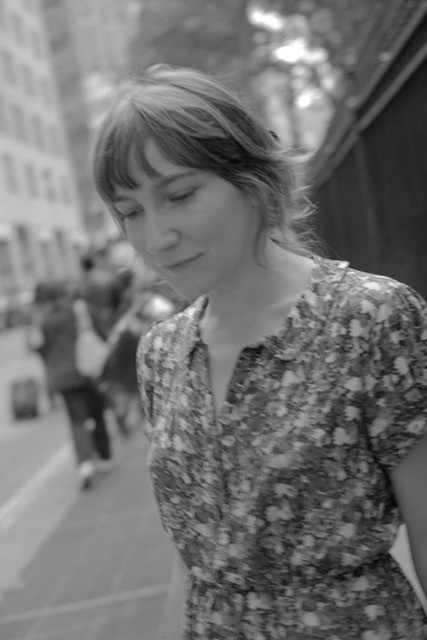 |
|
| Sheila Heti (photo: Sylvia Plachy) |
|
Sheila Heti is the bestselling and award-winning author of 11 books, including the novels Pure Color; Motherhood; and How Should a Person Be? She lives in Toronto, Canada. After being excerpted over 10 weeks in a New York Times newsletter in 2022, her memoir Alphabetical Diaries (reviewed in this issue) was published this month by Farrar, Straus and Giroux. Here Heti discusses her process for this project, its incubation and many iterations, and her trepidation about putting her diaries out there for a larger audience.
What instigated your return to your diaries for this book, and how did the concept of alphabetizing their sentences come to you?
I don't remember how the idea came to me, but I really like spreadsheets, and thinking in the form of spreadsheets, so it didn't seem so out of place to put my diary into Excel and alphabetize it. I began the project in 2010, when I had just finished writing How Should a Person Be? and I think one of the motivations was that I wanted to see who I had really been the past six or seven years, in contrast to the self that I had fictionalised. It's very easy to mistake a fictionalised self--the self you've turned into fiction--with your real self, and I wanted to remind myself of the difference, so looking at my diaries seemed like a good start.
What has been your relationship to diary writing outside of this project?
I have kept diaries on and off since I was a child. I learned early on that I was not the sort of person who could keep up a daily diary; it's just something I do when I feel like it, often when I'm going through something difficult emotionally. I write my diary on my computer. Sometimes I'll go six months without writing in it. I don't think I write very differently in my diary from how I write in other places. There maybe is a kind of seamlessness to diary writing and fiction writing, in the rhythm of the sentences, the sorts of things I notice, what seems interesting to think about.
Were there any patterns or repetitions that emerged from this project and were particularly surprising, disappointing, curious, or intriguing to you?
I don't think I had any strong expectations going in, so I wasn't experiencing surprise, disappointment, etc. as I was editing. I suppose what made the biggest impression on me was how few themes actually interest me, or perplex me, or beg to be written down. Romantic relationships, writing, money, what city I should live in--so many sentences came back to these five themes. I would have imagined there would be more variety.
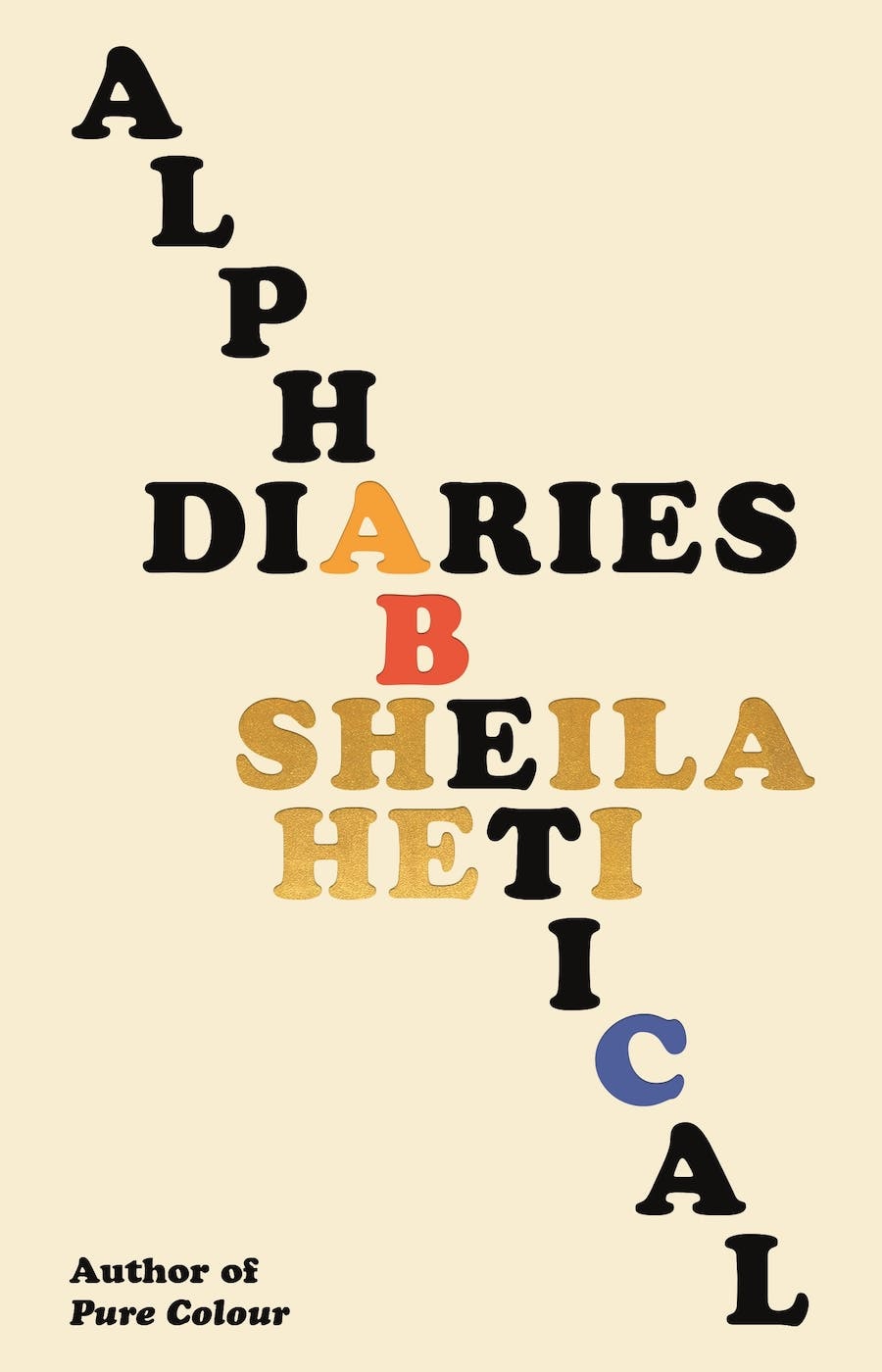 What was the editorial process like for this project?
What was the editorial process like for this project?
It took 14 years to edit, so it's hard to summarize. I was forever reverting to earlier versions, realising that I had made mistakes in my editing, cutting the wrong things. It took a long time for me to figure out what a book like this should consist of: how long it should be, whether the sentences should each be on their own line or in a continuous paragraph; what to do about the names of the people in my life. I had to make my life, in some ways, smaller than it had been, in order for the reader to feel continuity throughout the book, and I had to merge many people into single characters, in order for there to be something like "characters" in the book. It was a lot of thinking, figuring out--none of it came naturally. I had never written without chronology before. Rhythm becomes important, alternating colours and feelings, sentences pressing up against sentences to give a sense of vibration--the placement of sentences in relation to other sentences; I never thought I'd figure it out.
How do you think of this project in the context of your printed pieces?
It seems most like my first novel, Ticknor, which is the inner monologue of an anxious man on his way to a dinner party. That book and this one both focus on the minutiae of life, and the smallness and pettiness of one's own thoughts, especially one's own thoughts about oneself. In both books, you never get very far outside the narrator.
At this point, Alphabetical Diaries has existed in quite a few forms: as a series of your own diaries, as an N+1 essay, as a newsletter from the New York Times, as a book. Can you reflect a bit on what differences you think these various forms make?
I think this final book form is always what I was aiming for, it just took me a long time to get here. The newsletter was nice because it was a short little bite of the book, easy to take in. But I always wanted it to have an endless feel, too, the way life and the self feel sort of endless, so that form wasn't quite right. But I remember that when I published them in the Times, I still wasn't sure I wanted to publish it as a book, if I wanted to be that public with this project, if it could resolve into a book, so it seemed to me like that might be the final iteration of the project. I say this, even as I remember hoping that it could find its way to being a book.
What has the process been like of having people read your diaries?
I was only terrified the week it was going to appear in the New York Times, because a newspaper is so public, and it's not really the place for art, but for news and journalism. I thought people were going to wonder what this project was doing there, amidst writing about war and economics and social issues. I didn't know they were going to format it in such a way that it was going to look like something very different from a newspaper column or article; I had no idea how it was going to be presented. So in advance of that, I was very scared. But people seemed to like it--at least the ones who got in touch with me--and I think publishing it in the Times sort of inoculated me against feeling fear about publishing it as a book, and I'm actually looking forward to it being in the world. It's not really a diary anymore, now that it's in this highly edited, highly formal state. I don't think it reads like something that should be kept private. I think it now feels more like a novel, a character, a world. --Alice Martin, freelance writer and editor
Book Candy
Book Candy
A post-Valentine's Day reality check: Mental Floss delivered "9 unforgettable breakup letters from history."
---
The "Emily Dickinson Museum announces reopening of the Evergreens after years of preservation work," Fine Books & Collections magazine reported.
---
According to Apartment Therapy, " 'bookshelf wealth' is the new (viral!) way to style your old books & trinkets."
Rediscover
Rediscover: Ellen Gilchrist
 Ellen Gilchrist, "a Southern writer with a sharp, sometimes indulgent eye for her region's foibles and eccentricities," died January 30 at age 88, the New York Times reported. Gilchrist "had spent part of her childhood on a family plantation in the Mississippi Delta... and her fiction was populated by the gentry that came from that land, in both its urban and rural incarnations." A disciple of Eudora Welty, with whom she studied at Millsaps College in Jackson, Miss., in the 1960s, Gilchrist published more than 25 books, including novels, short story collections, poetry and memoirs.
Ellen Gilchrist, "a Southern writer with a sharp, sometimes indulgent eye for her region's foibles and eccentricities," died January 30 at age 88, the New York Times reported. Gilchrist "had spent part of her childhood on a family plantation in the Mississippi Delta... and her fiction was populated by the gentry that came from that land, in both its urban and rural incarnations." A disciple of Eudora Welty, with whom she studied at Millsaps College in Jackson, Miss., in the 1960s, Gilchrist published more than 25 books, including novels, short story collections, poetry and memoirs.
She won the National Book Award in 1984 for her collection Victory Over Japan, but it was her first collection, In the Land of Dreamy Dreams (1981), "which depicted in large part the fissures and pathologies of the New Orleans upper class, that was in some ways most characteristic. She considered it her best work," the Times noted.
First published by the University of Arkansas Press, In the Land of Dreamy Dreams was an unexpected hit for a university press. "It was this huge success and sold all the copies in about a week, and then he kept printin' 'em," Gilchrist said in her interview at the university, where she taught English and creative writing for 25 years. The book sold more than 10,000 copies in its first 10 months; was republished by what became her principal publisher, Little, Brown; and earned critical acclaim.
In the Land of Dreamy Dreams also launched Gilchrist as a writer when she was 46 and had endured a complicated personal life that included, as she wrote in the essay collection, The Writing Life (2005), "four marriages, three caesarean sections, an abortion, 24 years of psychotherapy and lots of lovely men," as well as a struggle with alcoholism.
Gilchrist's other books include Drunk With Love (1986), Light Can Be Both Wave and Particle (1989), I Cannot Get You Close Enough: Three Novellas (1990), Collected Stories (2000), Nora Jane: A Life in Stories (2005), Acts of God (2014), Falling Through Space: The Journals of Ellen Gilchrist (1987), The Writing Life (2005), and Things Like the Truth: Out of My Later Years (2016).
Gilchrist fell into the writing life almost by accident, though she had always written, mostly poetry. In The Writing Life, she wrote: "I was busy falling in love and getting married to three different men (I married the father of my children twice) and having babies and buying clothes and getting my hair fixed and running in the park and playing tennis."



